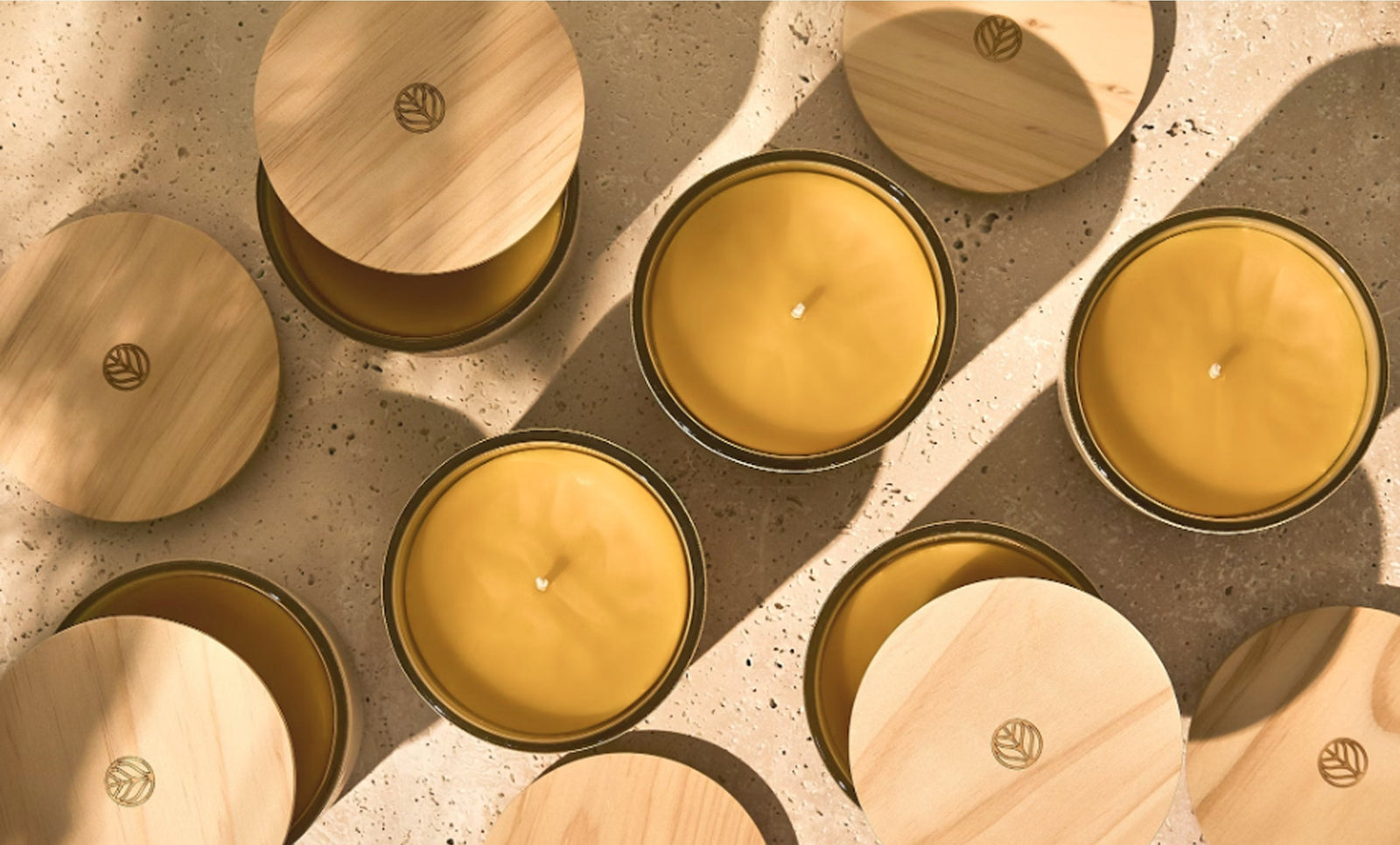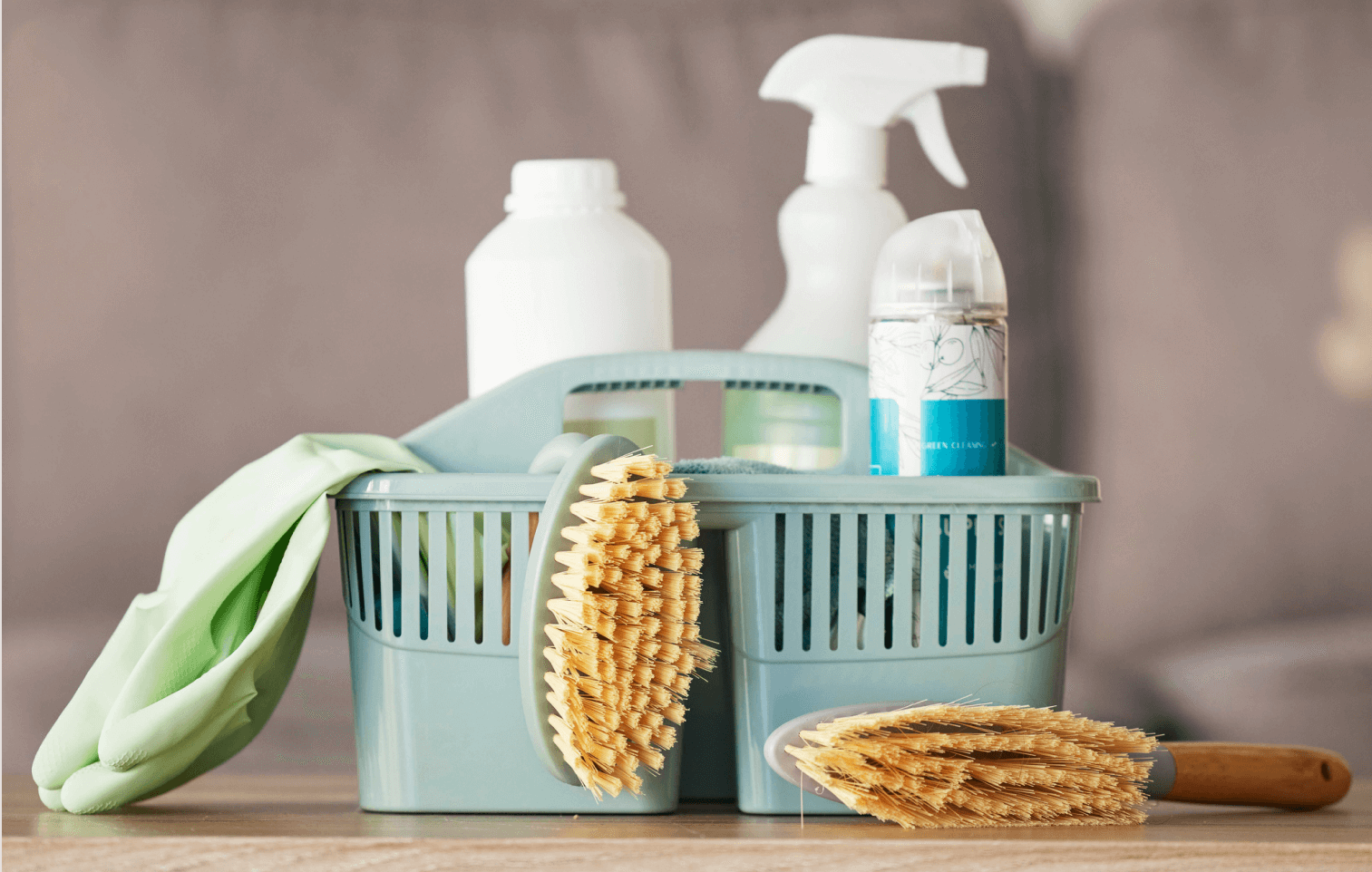Is Natural Fragrance Safe?

We get a lot of questions about natural fragrances and essential oils, which we’re excited to cover today.
Unfortunately, like many things labeled “natural,” natural fragrances aren’t typically what they appear to be.
Like their synthetic cousins, they may have natural origins, but may be extracted, isolated, and refined, creating a very different compound from the original substance.
This is why many natural fragrances are considered skin sensitizers and allergens.
Essential oils are a different story and can be a healthful alternative to synthetic and natural fragrances when safely processed and used appropriately (more on this to come).
Eager to learn more about the truth behind natural scents, fragrances, and essential oils, including phthalate-free/petroleum-free versions? Then let’s dive in.
A Brief Overview Of The Health Impacts Of Synthetic Fragrance
We have written extensively about the health impacts of synthetic fragrance on human health in various articles, which we’ll link to at the end of this section.
Here are five of the most important points we want you to remember before we get into natural fragrances:
- Fragrance chemicals are considered one of the world’s top allergens, with over 34% of Americans reporting health issues from fragrance.[1]
- There are over 5000 fragrance ingredients, many of which have not been tested or tested adequately for safety, and none of which must be disclosed on labels.[2]
- A single proprietary “fragrance”, such as those found in laundry and cleaning products, can contain dozens of undisclosed chemicals.[3]
- Various fragrance chemicals have been shown to be probable, suspected, or confirmed:[4-11]
-
- Endocrine (hormone) disruptors
- Asthmagens (cause asthma)
- Neurotoxins (impact the brain)
- Obesogens (cause metabolic syndrome and may make it impossible to lose
- weight regardless of diet and exercise)
- Carcinogens (cancer-causing ingredients).
- Metabolic disruptors (interfere with one or more aspects of metabolic function)
They’re also linked to:
-
- Migraine headaches
- Neurological problems, including ADD, ADHD, and autism
- Mucosal symptoms
- Skin issues, such as contact dermatitis
- Breathing difficulties
- Developmental toxicity
5. Fragrances can be addictive. Like some food additives, fragrances may access parts of the brain involved in happiness, pleasure, nostalgia, memory, arousal, and satisfaction, causing an emotional or physical reaction and attachment to their scent.
If this is your first time learning about the history and harms of fragrance, we recommend reading:
- Fragrance Is The New Secondhand Smoke | Eliminate Synthetic Fragrance To Improve Your Health
- The Emotional Attachment To Fragrance
- How To Remove Synthetic Fragrance From Your Home
Why Natural Fragrances Are Deceptive and Dangerous
Once people discover the shocking truth about synthetic fragrances, they typically go completely fragrance-free or switch to natural fragrances or essential oils.
Unfortunately, just like natural flavors in processed and even organic health foods, natural fragrances are typically less than transparent, safe, and natural.
Words like “deceptive” and “dangerous” may seem alarmist, but unfortunately, they are accurate in this case.
The deception comes from the fact that, just like with synthetic fragrances, very few companies will disclose the ingredients in their natural fragrances on labels.
Even if you contact them directly (as I have done numerous times in private practice and as a product safety advocate for the chemically sensitive), it’s a rare company that will provide a natural fragrance ingredient list.
Instead, you’ll typically get a response like, “Our natural fragrances are proprietary blends, but they’re all sourced from plants or other natural substances.”
Even though you’d have no way of knowing if that’s true, let’s presume it is.
The problem is that, unlike truly natural scents, like those from herbal or flower extracts or infusions, for example, natural fragrances are created from plant extracts that are extracted, isolated, and refined, creating completely different molecules and substances than those found in the original substance.
These fragrances are also highly concentrated and may emit a much more powerful scent than they would have if left in their natural form.
Some examples of natural fragrance isolates, which are also sensitizers and allergens, include[12]:
- Limonene
- Coumarin
- Eugenol
- Citronellol
- Benzyl benzoate
- Geraniol
Beyond the origin of the scent ingredients, there’s the issue of the functional ingredients used to extract the scent, act as a carrier, create a lasting scent, preserve the product, and materials used to process the scent.
These functional ingredients may include toxic or potentially toxic solvents, extracting agents, and alcohols (plant-based or petroleum-based), which can generate harmful particulates and toxic VOCs. If the materials used to process the scents contain plastic parts or any PFAS ingredients, further contamination of the ingredients may occur.
This was made evident by a study that analyzed 25 top-selling products and discovered that the “green”, natural, and organic fragranced products emitted just as many hazardous chemicals as regular fragranced products.[13]
How can that be?
It’s the science of creating fragrance, which produces toxic substances, whether that fragrance comes from 100 pounds of flowers or bark, animal by-products, or a synthetic petroleum product.
High-quality essential oils are different, and we’ll discuss them in subsequent sections.
What About Non-Toxic Fragrances, Like Phthalate- and Petroleum-Free Scents?
In an effort to reach more health- and toxin-conscious consumers, some companies market their scents as non-toxic, clean, phthalate-free, and/or petroleum-free.
First off, the terms “non-toxic” and “clean” are largely unregulated and don’t necessarily mean much.
Regarding phthalate-free scents, that is a good thing as phthalates are one of the most concerning and prevalent ingredients in fragranced products, and are associated with diabetes, obesity, certain types of cancer, allergic conditions, ADD, ADHD, and autism, and hormonal issues affecting fertility and development.[14-16]
Petroleum products are also a significant threat to human health and the environment.
Obviously, phthalate and petroleum-free fragrances, as well as natural fragrances, are a step in the right direction.
However, the absence of these ingredients doesn’t negate the presence of other harmful and potentially harmful synthesized scents, solvents, dilutants, antioxidants, preservatives, and other byproducts.
Therefore, we do not recommend even non-toxic, clean, phthalate-free, and/or petroleum-free natural fragrances, especially if you’re chemically sensitive or have any health issues.
Related Reading: All About Phthalates + Why You Should Avoid Them
Natural Fragrance and Fragrance Oils Vs. Essential Oils
Although we recommend aiming for a fragrance-free home, high-quality, organic, or wild-crafted steam-distilled essential oils are immensely better than natural fragrance.
They can also be therapeutic and serve as effective cleaning agents and substitutes for other fragrances.
So, What’s The Difference?
Natural fragrances and fragrance oils are made with plant isolates of one or more plants, which are extracted and isolated, then combined with the other functional ingredients discussed previously.
Essential oils are extracts of the whole spectrum of the plant’s natural scent, not just one component.
In high-quality essential oils, this is done using steam distillation, which naturally separates the essential oil from other plant parts, leaving behind essential oil, hydrosol (the lightly naturally-scented water from the plant), and the fibrous plant material.
They are not further isolated, cut with other substances, or preserved, making them a truly natural scent extract.
However, Not All Essential Oils Are Created Equal
Steam distillation is the most natural method of essential oil extraction, but it’s not the only one used.
Unfortunately, some companies use harsh solvents to extract essential oils, leaving harmful residues behind.
From there, they may even cut the essential oils with fragrance ingredients, fragrance oils, or cheap carrier oils to create a cheaper product.
In addition, if the processing involves plastic tubing, the oils become contaminated with lipophilic (fat-loving) plasticizing chemicals, which are known endocrine disruptors, neurotoxins, asthmagens, obesogens, and carcinogens.
In this case, the essential oil may not be much better than a “natural” fragrance, so choosing high-quality essential oils from a trusted and transparent company is necessary.
In addition to choosing steam-distilled oils, we also recommend sticking with those made from organic and/or wild-crafted materials, as pesticide residue may be prevalent and concentrated in certain scents, such as citrus, barks, and roots.
A Few of Other Things To Be Aware Of When Using Essential Oils
1. Essential oils can be powerfully therapeutic. To ensure beneficial use, it is ideal to consult professionals trained in the application of essential oils.
However, new evidence suggests plant compounds in some essential oils, like tea tree and lavender, may have endocrine-disruptive properties, which is concerning regarding their use around developing babies and children.[16]
2. Terpene-containing essential oils can react with ozone, creating harmful VOCs, like formaldehyde and small ultrafine particulates. [17]
This is significant if you live in an area with ozone alerts or utilize devices that emit ozone, such as certain air purifiers, large copy machines, and other devices.
3. This point is for the chronically ill or those dealing with sensitivities. Although essential oils have been used medicinally for thousands of years, with today's processing, they can also be contaminated.
After working for over thirty-five years with people with chronic illness, I’ve found that for the fastest recovery, going totally fragrance-free is a powerful first step.
This complete removal is tantamount to an elimination diet, where you remove a potential offending food for a period of time, then reintroduce it to discover if you have any reactions.
When you want to reintroduce essential oils, it will be easy to determine if there is any reaction. Visit our Toss the Toxins course and view the fragrance videos for more information.
Otherwise, it is generally safe to use essential oils as a substitute for natural and synthetic fragrance, provided you choose steam-distilled, organic/wild-crafted, 100% pure, and plastic-free brands.
We also generally recommend using them sparingly and only as needed (versus every day), as they are potent and concentrated therapeutics.
The Best Natural Fragrance Alternatives
We recommend keeping a fragrance-free home. However, there are some natural ways to add truly safe, pleasant, and comforting smells to your home and remove odors.
Some of our favorites include:
- Simmer pots
- Baking soda
- Natural flowers and potted plants
- Pure dried herbal sachets
- Natural boughs, such as pine, spruce, and cedar, over the holidays
- Cedar and dried herbal pouches for keeping drawers fresh
- Pure organic steam-distilled essential oils (used sparingly)
- Pure vanilla extract on a cotton ball to stash with laundry, stored clothing, or bedding
- Open windows to bring in the natural fresh air
Get more ideas, including simmer pot recipes, in 7 Non-Toxic Air Fresheners.
As you transition away from fragrance, just remember it can have a powerful emotional hold, making it hard to let go.
Our free Toss The Toxins Online Course teaches you how to gently remove fragrance from your home without experiencing withdrawal symptoms or rebellion.
We don’t ask you to throw anything away; instead, we recommend removing products from your home for a period of time and later reintroducing them to see how your body responds.
These fragrance alternatives can be helpful during the transition or any time you want to bring some fresh scents into your home.
Related reading: How To Remove Synthetic Fragrance From Your Home
The Bottom Line About Natural Scents And Fragrances
Fragrances are a lot like sugary sweets; we all love them, but they’re typically not healthy for us, even in more natural or artificial sugar-free forms.
The exceptions are pure, steam-distilled, organic/wild-crafted, plastic-free essential oils, which are truly natural products, and the other alternatives listed above.
Ultimately, we recommend a fragrance-free home to avoid potentially harmful toxins, ill health effects, and reactions, and to create more simplicity.
Just be sure you’re choosing human-safe and naturally fragrance-free products, like Branch Basics, as fragrance-free products, such as laundry detergents, may contain harmful scent-masking chemicals (for real!).
Discover Branch Basics For Naturally-Fragrance Free, Human-Safe Cleaning
Branch Basics is an all-in-one cleaning system that’s naturally fragrance-free, designed for the most sensitive individuals (including those with chemical sensitivities), and made with 100% human-safe, biodegradable, plant- and mineral-based ingredients.
Just one Concentrate plus water creates all the cleaning products you need to clean your entire home, including your floors, bathrooms, kitchen, baseboards, pets, carpets, decks, hands, laundry, baby, children, and everything in between.
All Branch Basics products are MADE SAFE certified, EWG Verified or rated “A”, cruelty-free, third-party tested, non-skin and eye irritants, and made with 100% biodegradable and naturally fragrance-free ingredients.
Learn more about how it works in How To Get Started With Your Branch Basics Kit.
Ready to shop?
Discover our Starter Kits, available in refillable plastic or glass, which include everything you need: Concentrate, reusable bottles, and the power to clean your entire home without the use of fragrance, natural fragrance, or other harsh chemicals.
References:
1: https://pubmed.ncbi.nlm.nih.gov/19326669/
2. https://www.scientificamerican.com/article/toxic-perfumes-and-colognes/
3: https://www.sciencedirect.com/topics/materials-science/fragrance
4: https://pmc.ncbi.nlm.nih.gov/articles/PMC5093181/
5: https://www.mdpi.com/2673-396X/5/3/27
6: https://pmc.ncbi.nlm.nih.gov/articles/PMC3404651/
7: https://nypost.com/2024/12/03/health/perfume-ingredient-can-lead-to-heart-issues-and-infertility-say-doctors/
8. https://pmc.ncbi.nlm.nih.gov/articles/PMC9163252/
9: https://www.nature.com/articles/s41370-024-00693-8
10: http://www.ewg.org/enviroblog/2014/08/expert-panel-confirms-fragrance-ingredient-can-cause-cancer
11. https://pmc.ncbi.nlm.nih.gov/articles/PMC7218126/
12: https://ifrafragrance.org/transparency-list
13: https://pmc.ncbi.nlm.nih.gov/articles/PMC3018511/
14. https://www.ncbi.nlm.nih.gov/books/NBK587442/
15: https://www.sciencedirect.com/topics/materials-science/fragrance
16: https://pmc.ncbi.nlm.nih.gov/articles/PMC8157593/
17: https://www.medicalnewstoday.com/articles/321262
18: https://ww2.arb.ca.gov/resources/fact-sheets/cleaning-products-indoor-air-quality
Categories

Marilee Nelson
Marilee Nelson is an Environmental Toxins expert who has spent nearly 30 years advocating for the chemically-sensitive and chronically-ill. She is a Board Certified Nutritionist, Certified Bau-Biologist and Bau-Biology Inspector and specializes in Food As Medicine. She has helped thousands of families and individuals identify, heal and recover from toxic exposures and is on a mission to revolutionize the way American families view their health.







